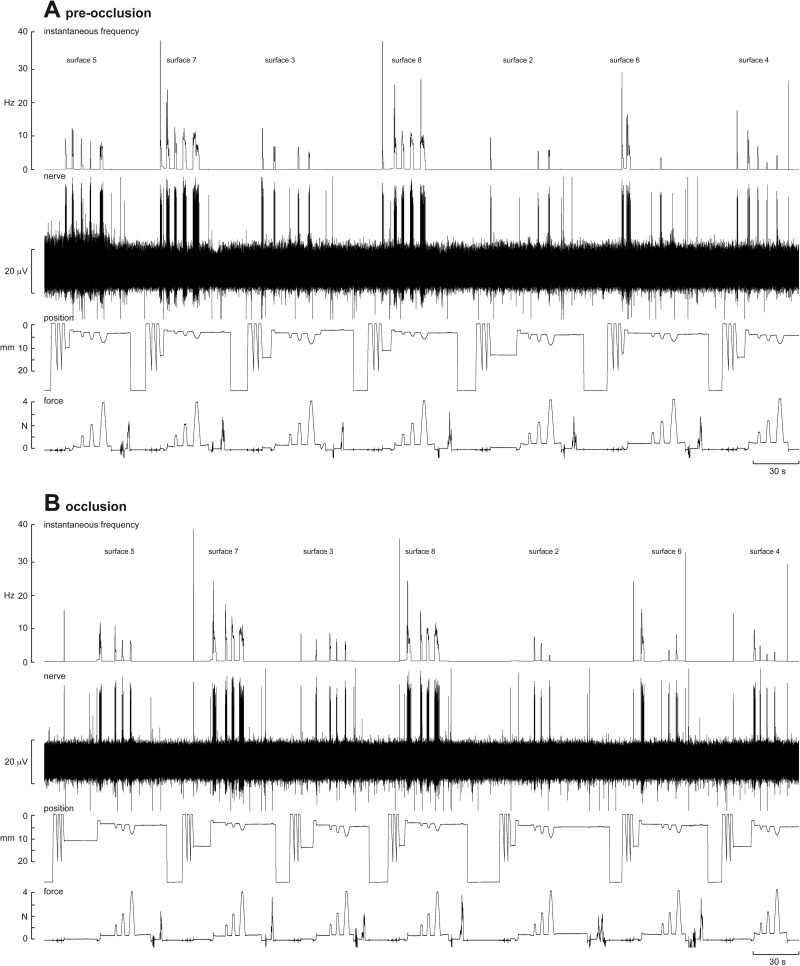Fig. 4.
Experimental records from an SAI afferent to sets of trapezoidal compression ramps delivered to the pad of the receptor-bearing digit at 2 N/s via flat silicone disks of differing compliance. Responses to 1-, 2- and 4-N forces are shown for seven of the nine compliant surfaces; the softest (surface 1) and hardest (surface 9) are not shown. Data are shown before (A) and after venous occlusion (B). The position trace, obtained from the linear variable displacement transducer signal of the linear motor, indicates part of the initial searching paradigm, by which the control system operated under position control prior to engaging in force feedback on contact with the finger pad. Artifacts in the force trace after the three force ramps indicate manual exchange of one silicone disk to the next one.

